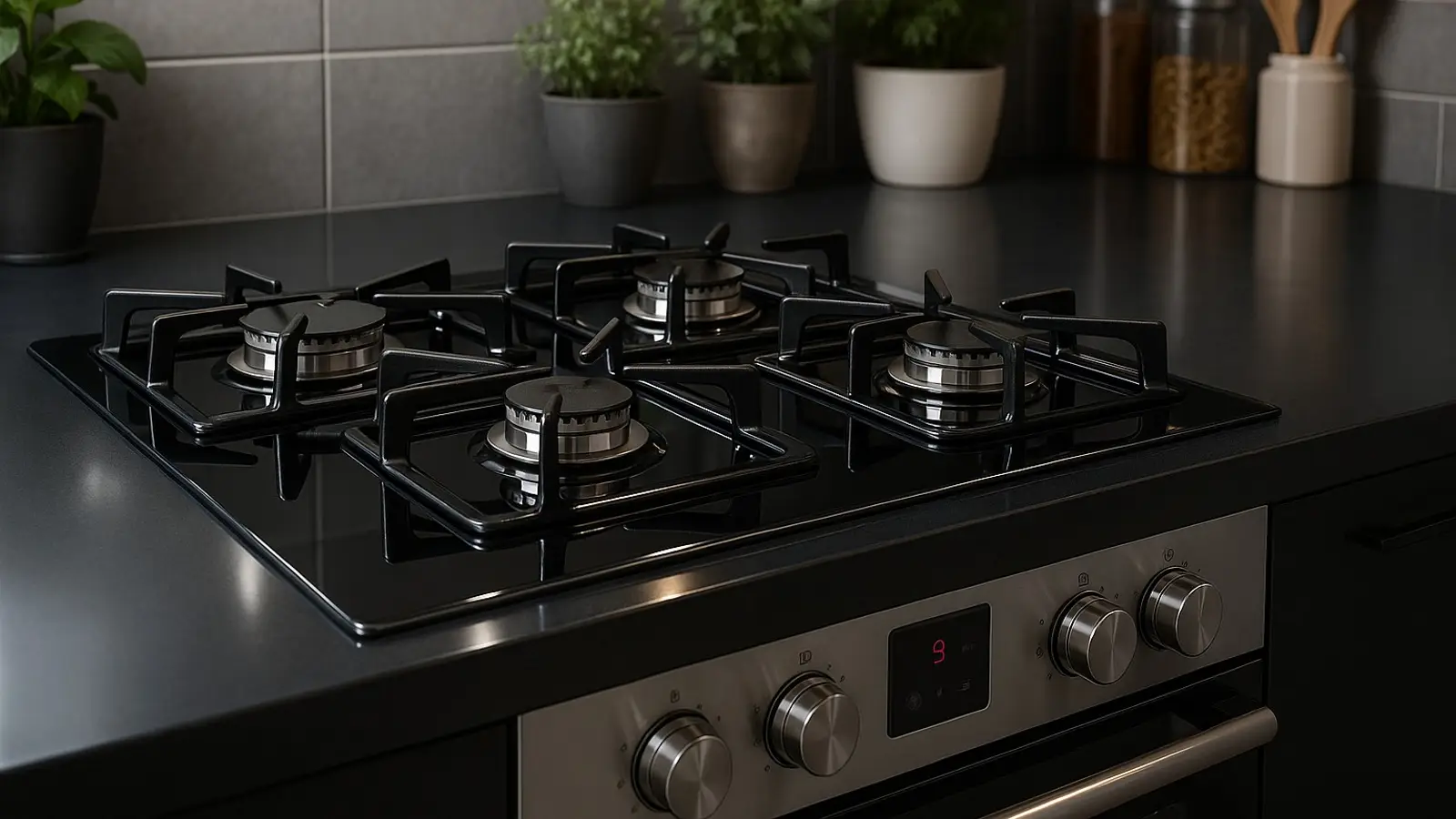https://boda.su/en/posts/id791-effortless-way-to-clean-gas-stove-grates-with-pipe-gel
Effortless Way to Clean Gas Stove Grates with Pipe Gel
How to Clean Greasy Gas Stove Grates Easily Using Pipe Cleaner Gel
Effortless Way to Clean Gas Stove Grates with Pipe Gel
Discover a simple and effective method to clean gas stove grates with pipe cleaner gel. Remove grease and carbon buildup effortlessly and restore a brilliant shine.
2025-10-14T09:29:59+03:00
2025-10-14T09:29:59+03:00
2025-10-14T09:29:59+03:00
An Unexpected Kitchen Ally
Cleaning grease and burnt residue off gas stove grates is rarely anyone’s favorite task. It usually demands time, energy, and a shelf full of cleaning agents. Yet there’s a surprisingly effortless method that restores the metal’s shine with minimal scrubbing.
It turns out that a common household product — pipe cleaner — can be an effective ally in this battle. The gel, typically used to dissolve clogs, also works wonders on grease and carbon buildup.
How the Method Works
Pipe-cleaning gel, which often contains caustic soda or acid, breaks down old, stubborn grime. To make use of this property, place the grates in a large plastic bag or basin and apply the gel evenly to every greasy surface. Protective gloves are essential, as the chemical is strong and may irritate the skin.
Seal the bag tightly or cover the container with plastic wrap to prevent the gel from drying out. Leave the grates for several hours — overnight if possible. During that time, the product softens the carbonized residue, turning it into a pliable layer that’s easy to remove.
Minimal Effort, Maximum Effect
In the morning, rinse the grates under hot water. A sponge with a rough side will help remove the remaining traces of grease, though heavy scrubbing won’t be necessary. The metal will stay smooth and free of scratches, unlike when metal brushes are used.
This method suits both cast iron and steel grates. However, if there’s a protective coating or enamel layer, caution is advised — the active ingredients might damage the finish.
The Finishing Touch
Once the cleaning is done, rinse the grates thoroughly to wash away any chemical residue. For extra safety, you can wipe them with soapy water afterward.
Regular use of this technique can prevent stubborn buildup, reducing the need for frequent deep cleans. A thorough cleaning session every few months will keep your kitchen looking immaculate.
The Simple Secret of a Sparkling Stove
What makes this trick so appealing is its simplicity and efficiency. A few hours of passive waiting, and your stove looks brand new again — no muscle strain required. The only thing left to do is enjoy the result and use the saved time for something far more pleasant.
Gas Stove Cleaning, Pipe Cleaner Gel, Remove Grease, Kitchen Cleaning Tips, Easy Stove Maintenance, Clean Stove Grates, Home Cleaning Hacks, Metal Grate Care, Household Cleaning
2025
articles
How to Clean Greasy Gas Stove Grates Easily Using Pipe Cleaner Gel
Discover a simple and effective method to clean gas stove grates with pipe cleaner gel. Remove grease and carbon buildup effortlessly and restore a brilliant shine.
Generated by Dall-e
An Unexpected Kitchen Ally
Cleaning grease and burnt residue off gas stove grates is rarely anyone’s favorite task. It usually demands time, energy, and a shelf full of cleaning agents. Yet there’s a surprisingly effortless method that restores the metal’s shine with minimal scrubbing.
It turns out that a common household product — pipe cleaner — can be an effective ally in this battle. The gel, typically used to dissolve clogs, also works wonders on grease and carbon buildup.
How the Method Works
Pipe-cleaning gel, which often contains caustic soda or acid, breaks down old, stubborn grime. To make use of this property, place the grates in a large plastic bag or basin and apply the gel evenly to every greasy surface. Protective gloves are essential, as the chemical is strong and may irritate the skin.
Seal the bag tightly or cover the container with plastic wrap to prevent the gel from drying out. Leave the grates for several hours — overnight if possible. During that time, the product softens the carbonized residue, turning it into a pliable layer that’s easy to remove.
Minimal Effort, Maximum Effect
In the morning, rinse the grates under hot water. A sponge with a rough side will help remove the remaining traces of grease, though heavy scrubbing won’t be necessary. The metal will stay smooth and free of scratches, unlike when metal brushes are used.
This method suits both cast iron and steel grates. However, if there’s a protective coating or enamel layer, caution is advised — the active ingredients might damage the finish.
The Finishing Touch
Once the cleaning is done, rinse the grates thoroughly to wash away any chemical residue. For extra safety, you can wipe them with soapy water afterward.
Regular use of this technique can prevent stubborn buildup, reducing the need for frequent deep cleans. A thorough cleaning session every few months will keep your kitchen looking immaculate.
The Simple Secret of a Sparkling Stove
What makes this trick so appealing is its simplicity and efficiency. A few hours of passive waiting, and your stove looks brand new again — no muscle strain required. The only thing left to do is enjoy the result and use the saved time for something far more pleasant.

